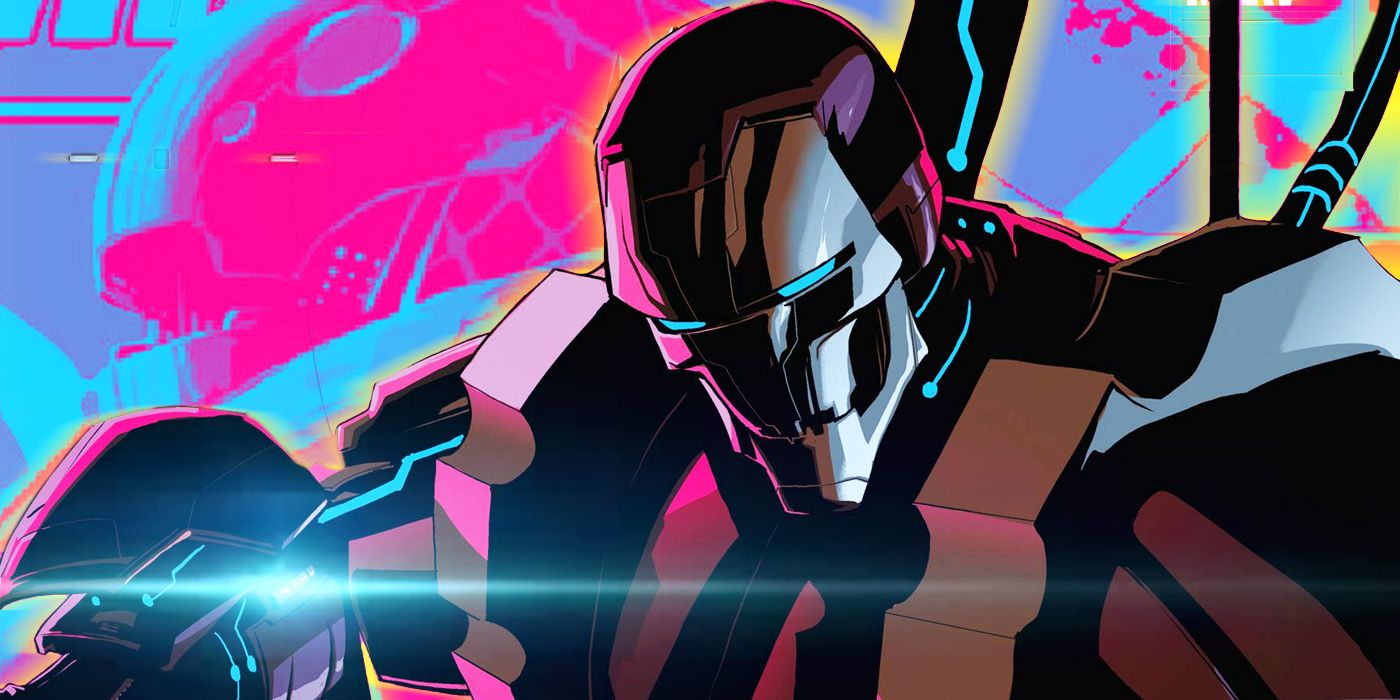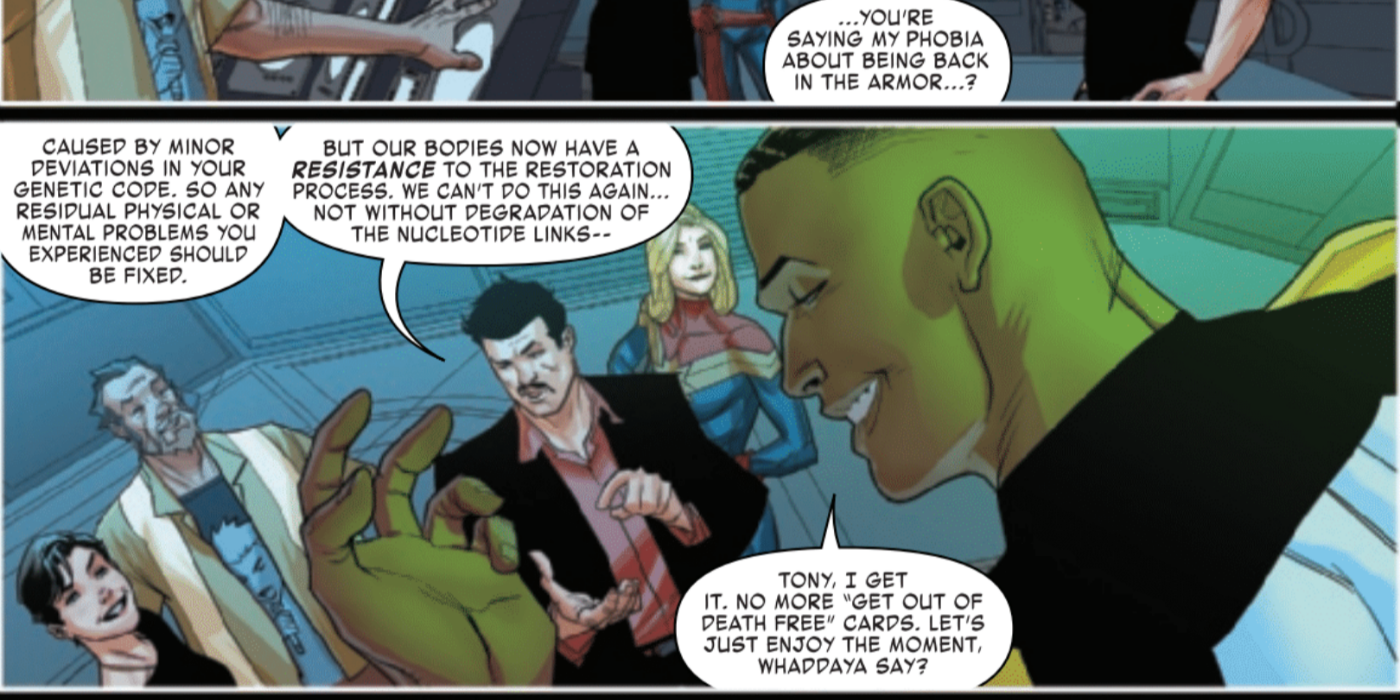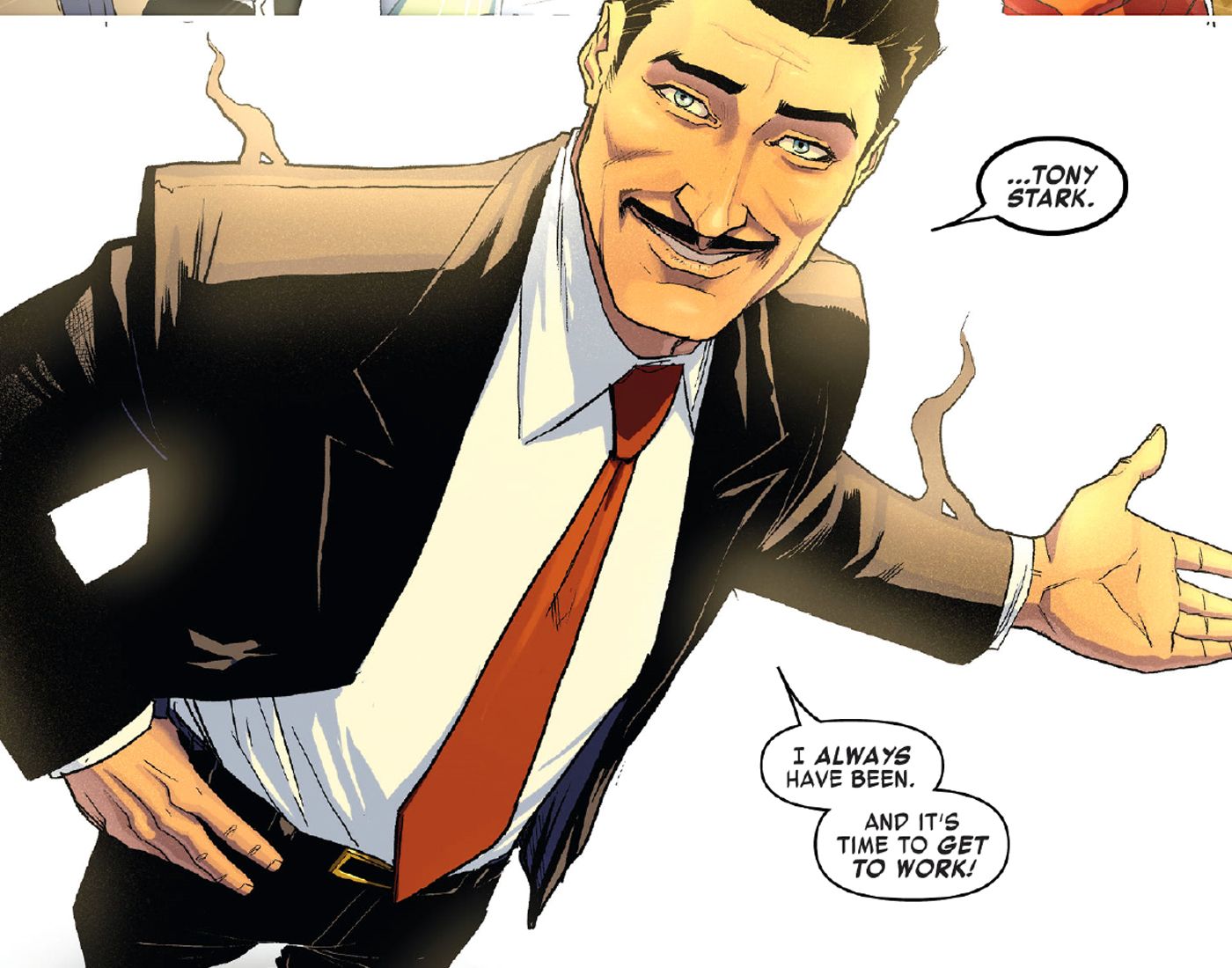WARNING: The following contains spoilers for Iron Man 2020 #6 by Dan Slott, Christos Gage, Pete Woods, & VC's Joe Caramagna, on sale now
Like many comic book super heroes, Iron Man has previously died and come back to life. His most recent form of restoration is nearly perfect, and may present an answer to the resurrection protocols now available to the X-Men living on Krakoa.
Iron Man just perfected the device he used to resurrect himself and War Machine - but it turns out there's an inherent flaw, as the machine can only work on each person once.
Over the course of Civil War II, Iron Man opposed Captain Marvel and her plans to utilize the predictions being made by the Inhuman Ulysses to prevent crimes before they could happen. The two eventually came to blows over the issue, with Tony even being knocked into a coma in the aftermath. Eventually taken to a Stark Industrial lab, his body was reconstructed, cell by cell. Upon being reborn, Tony did the same to his fallen friend Rhodey, reviving him as well. Although there was some initial question whether this was a genuine restoration or just the creation of a very lifelike replica, it was eventually decided that this was the genuine Tony Stark given a new body - and the same applied to War Machine, who was still very much James Rhodes.
After saving the world from his brother Arno, Tony is able to use DNA from his friend's living relatives as the last ingredient to finalizing the bodies, removing any aberrations or fallacies in the process - specifically curing Rhodes of the fault in his reconstruction that had briefly given him a phobia of climbing back into armor. At first glance, this method is the perfect tool for superheroes. Even if they are killed in battle, Tony's restorative technology could theoretically just create a new body for the fallen hero, allowing them to reenter the fray down the line.
If fully realized, Tony's restorative tech could be the Avengers' answer to the Five on Krakoa, a group of specific X-Men who can use their powers in concert to create a new version of any mutant who has died. The two processes are, at their core, very similar, and could provide more heroes of the Marvel Universe with the ultimate way to overcome death.
But it turns out there's a pretty glaring flaw in Iron Man's device. Tony reveals to Rhodes that going through the development leads to them developing a resistance to the restoration process. Their bodies can't be replicated a second time without suffering from major degradation on a cellular level. In essence, the process is a one-time deal for anyone who goes through it, restoring their bodies perfectly one time but proving ineffective at doing it twice.
The creation could still be vastly important for the heroes, as it could serve as a means to restore fallen heroes at least once. But the best effect of the Krakoan process is that there is no cap on how many times the heroes can go through the process , giving the X-Men plenty of lives, regardless of the number of times they've died in the line of duty. This keeps Iron Man and his allies from having a full answer to the Krakoan innovation, but it is indicative that humanity might be capable of catching up to mutant advancements - something the X-Men should remember if they want to avoid many of the AI-driven dark futures they've encountered over the years.



